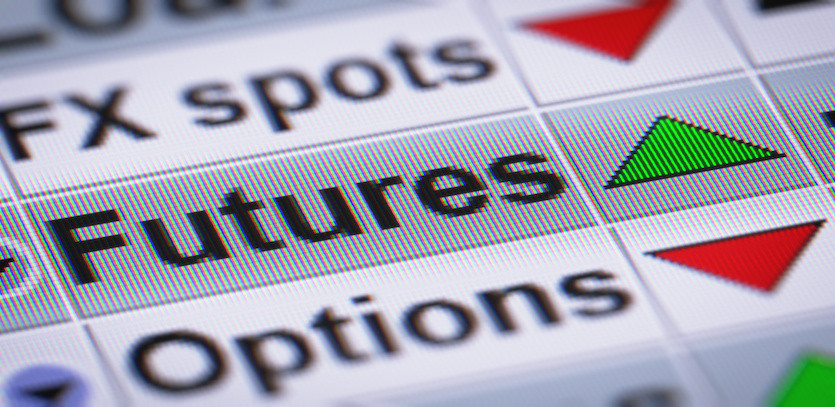Delving into Dow Futures
In the dynamic world of trading, Dow Futures represent a significant aspect. They are a type of forward contract for commodities, having specified prices and delivery dates set in the future. These financial instruments empower investors to speculate or forecast the potential value of stocks before the market opens.
Dow Futures operate on a legally binding agreement between two parties, which could be individuals or financial institutions. This agreement stipulates an exchange of assets or money based on the expected prices of an underlying index. Each trading day, Dow Futures commence their action on the Chicago Board of Trade (CBOT) at precisely 7:20 a.m. Central Time.
Dow Futures: Explanation and Application
You can witness commodities trading within the ambit of the Dow Jones Industrial Average (DJIA) and the Standard & Poor's (S&P) 500 indexes. This is the platform where traders get an opportunity to deal in commodities futures contracts on the index as opposed to directly purchasing securities.
If you're a novice to the futures market, the concept of Dow Futures might appear challenging initially. But fret not. We'll walk you through the essentials to help you grasp the concept better. Also, note that Dow Futures can sometimes be referred to by their alternate name: Dow Jones Futures.
The Functionality of Dow Futures
Grasping how Dow Futures work can be made easier through a simple analogy involving a farmer and a grocer. The grocer, knowing the farmer will soon have a crop of soybeans ready for harvest, proposes to buy 100 bushels of soybeans in January for $900. Upon the farmer's agreement, the contract is formed, and both parties wait for January. Regardless of the market price of soybeans in January, the grocer will adhere to the pre-set price.
This example paints a clear picture of a futures contract, which is essentially a legally binding pact between two entities. They agree to swap assets or money based on the anticipated prices of an underlying index.
The Trading Environment of Dow Futures
Your position in a trade, marked by the purchase price you agree upon with the seller, becomes your foothold in Dow Futures trading. Dow Futures contracts are traded on an exchange, which acts as your counterparty when you establish your position, i.e., your contract and price, on the commodity.
The exchange plays a crucial role in maintaining the fairness of trading and mitigating risks, such as one party defaulting on the contract. By channeling all futures contracts through the exchange, the risk is significantly reduced, as the exchange stands as a guarantor for every position.
Trading Timings
The trading of Dow Futures kicks off each day on the Chicago Board of Trade (CBOT) at 7:20 a.m. Central Time (8:20 a.m. Eastern Time). This time is precisely an hour and ten minutes before the stock market swings open. This trading window facilitates reporters and professionals to estimate market sentiment, the collective attitude of investors towards market potential and prices.
Market sentiment is rather temperamental. For instance, if a company announces robust earnings, triggering a surge in Dow Futures, it's highly likely that the stock market will follow the upward trend. Conversely, if a sudden event like a major weather disruption shuts down significant shipping lanes before the stock market opens, it could result in a decline in Dow Futures. In such cases, investors start foreseeing complications, which could lead to a downturn in stocks once the market opens.
Leveraging in Futures Trading
An attractive feature of Dow Futures is their in-built leverage. This means traders can invest a relatively small amount of money to trade futures while expecting potentially exponential returns or losses. The leverage aspect allows traders to profit significantly more from market price fluctuations than they could by merely buying a stock outright.
Trading Dow Stocks in June
Historical data suggests that June has often been the second weakest month after September, based on the Dow Jones average dating back to 1885. However, more recent analyses of the S&P 500 indicate a more optimistic tone for this month.
The cycle/relative strength concept is employed for the month. The 30 stocks of Dow Jones are ranked from the best to the worst performer by determining the expected return for the month. The top performers are then screened for relative strength based on a unique measure that considers various relevant timeframes. The stocks that pass both screens are bought for the month, while the ones that underperform over the month and show weak relative performance are short sold for the month.
This process is applied to the Dow Jones 30 stocks by purchasing the top 5 rated stocks and shorting the 5 lowest rated stocks. From January 2020, the top five long stocks have increased by an amount around 53% greater than that of the short sales and 29% over the DJIA. The short sales were net negative over that time period at -11%.
In conclusion, trading Dow Futures can serve as a potent tool for investors, allowing them to speculate on the future value of the Dow Jones Industrial Average. This understanding allows them to make informed decisions before the market opens each day. Despite their inherent complexities, a grasp of their functionalities, coupled with a strategic approach towards leveraging and a clear understanding of market sentiment, can lead to potentially exponential returns. However, it's also important to note the risks associated with such trades, underscoring the importance of prudent decision-making and careful planning. As with any form of trading, knowledge is power in the world of Dow Futures.





